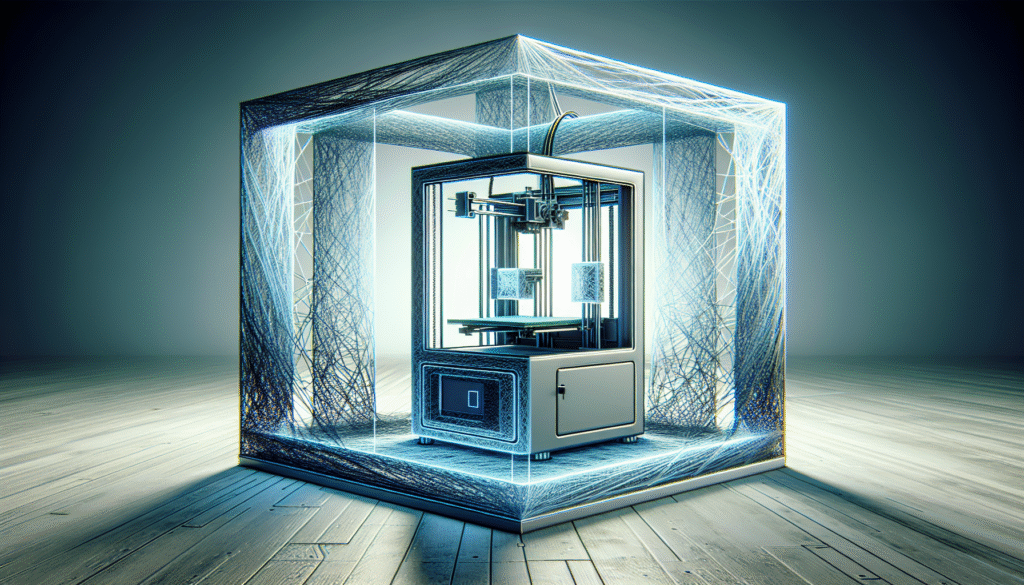Have you ever pondered how the emerging technology of blockchain could intersect with the world of 3D printing to transform industries? I find it fascinating how these two innovative concepts can converge to improve security and efficiency in ways we might not have imagined before. With blockchain’s robust capabilities, it’s like having an incorruptible digital ledger paired with the creative possibilities of printing physical objects from digital designs. Let’s dive into how these two powerhouses are reshaping the realms of intellectual property and supply chains in 3D printing.

Understanding Blockchain and 3D Printing
Before we delve into the specifics, let’s first understand what blockchain and 3D printing entail. They’re revolutionary on their own, but together, they are reshaping the future. Think of blockchain as a secure, transparent, immutable ledger that records transactions. It’s decentralized, meaning there’s no single point of failure making it highly secure against tampering.
3D printing, on the other hand, is like having your mini-manufacturing plant. Through this technology, you can convert digital designs into three-dimensional objects. It’s transforming industries by enabling rapid prototyping and reducing the time from idea to physical reality, among other benefits.
How Do They Work Together?
The integration of blockchain with 3D printing is a natural fit, mainly because it addresses some pressing challenges in the 3D printing industry, such as protecting intellectual property (IP) rights and ensuring the integrity of supply chains. When you print a 3D object, the concern arises as to who owns the design and how can it be protected? Blockchain offers solutions to these concerns by providing a secure, verifiable platform for design file distribution and usage tracking.
The Role of Blockchain in Securing Intellectual Property
Intellectual property rights protection is critical in industries that rely on proprietary designs and technology. In 3D printing, a design file is as valuable as the end product it creates. Imagine creating an innovative design file, only to have it reproduced without your consent. Or perhaps, altered slightly and claimed by another. This is where blockchain steps in, offering a layer of security and trust that didn’t exist before.
Immutable Record-Keeping
Blockchain allows for the creation of a tamper-proof ledger where ownership of a design file can be indisputably documented. Once a design is registered on a blockchain, any changes to it can be tracked and verified, helping to prevent unauthorized alterations and ensuring that credit goes to the rightful creator.
Smart Contracts for Licensing
Smart contracts are an exciting feature of blockchain technology which can further secure IP in 3D printing. These are self-executing contracts where the terms of the agreement are written into lines of code. In the 3D printing realm, smart contracts enable automatic licensing and royalty payments when a design is used, ensuring that creators are compensated for their work.

Protecting Supply Chains
Supply chains in the 3D printing industry can be complex, involving multiple steps from design to delivery. In this intricate web, there are many opportunities for disruption, theft, or quality issues. Here’s where blockchain shows its practical value yet again by weaving a reliable thread through the supply chain tapestry.
Enhanced Transparency
Blockchain technology enhances supply chain transparency by providing an immutable record of every transaction that occurs. You can track a product’s journey from the sourcing of raw materials to the delivery of the final product. This transparency helps in reducing fraud, improving product quality, and ensuring compliance with industry regulations.
Provenance and Traceability
Knowing the origin of raw materials and components is crucial, particularly in industries with strict compliance requirements. Blockchain enables detailed tracking of components in 3D printing, ensuring each part’s origin is traceable. This traceability ensures that everything is as it should be, which is crucial in industries like aerospace and healthcare where component quality is paramount.
Challenges Along the Way
As with any technological integration, combining blockchain with 3D printing isn’t without its hurdles. Examining these challenges is essential to understanding the broader picture and knowing how to navigate potential obstacles.
Scalability
One of blockchain’s known limitations is its scalability, particularly with larger networks. As the size of the blockchain grows, so does the requirement for storage and processing power. This could become problematic in the 3D printing industry, where vast quantities of data need to be stored and accessed quickly.
Energy Consumption
Another challenge is the energy consumption associated with blockchain technology. The process to validate transactions, known as mining, can be energy-intensive. In an era where sustainability is crucial, finding ways to minimize this is necessary.
Technical Integration
Integrating blockchain with existing 3D printing systems seamlessly is no small feat. It requires technical expertise and innovation in developing new systems that can incorporate blockchain’s capabilities without disrupting current operations.
Real-World Applications and Examples
Despite these challenges, there are inspiring success stories where blockchain and 3D printing have been applied to create tangible improvements and innovations.
Healthcare Industry
In healthcare, 3D printing is revolutionizing how prosthetics and implants are created. Using blockchain ensures that these critical components are of high quality and produced under the correct specifications. One can trace each component back to its source, ensuring safety and compliance with regulatory standards.
Aerospace Industry
In the aerospace sector, where precision and reliability are non-negotiable, blockchain can ensure that every 3D printed part and component is tracked and authenticated. This assurance is critical in an industry that regularly contends with counterfeits and quality assurance challenges.
The Future of Blockchain and 3D Printing
Looking ahead, the intersection of blockchain and 3D printing is ripe with possibilities that could redefine various industries. I can’t help but imagine a future where blockchain is not just an add-on but a core component of 3D printing technologies.
More Secure and Efficient Designs
The introduction of blockchain could lead to better security practices for design files, reducing IP theft. It may also encourage more designers to join the ecosystem, knowing their creations are protected.
Streamlined Supply Chains
As blockchain technology evolves, we could see more streamlined supply chains, with reduced bottlenecks and improved efficiencies. This would not only lower costs but also enhance product delivery times.
A Transformative Duo
Together, blockchain and 3D printing hold the promise of transforming how we approach manufacturing, prototyping, and product distribution. As more industries recognize the potential of this duo, we could witness a shift in how products are created, managed, and secured.
In Conclusion
So, what does the future hold for blockchain in 3D printing? It’s an exciting area with vast potential yet also challenges that need to be meticulously navigated. However, the benefits that these technologies offer, from securing intellectual property to refining supply chains, make the effort worthwhile. It’s a journey that’s just beginning, and as someone fascinated by technological advancements, I’m eager to see where this path leads. Perhaps one day, blockchain will become as integral to 3D printing as the designs themselves.


